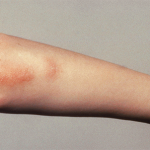Treatment of juvenile idiopathic arthritis (JIA) has a straightforward goal: to achieve disease remission and allow children to grow and develop normally. Several challenges stand in the way. There is a lack of decisive data on the medication (or combination of medications) that can achieve this xaa reliably and the etiology of disease is unknown. The most important targets for therapy among the myriad of documented immunologic abnormalities are not certain.
It is clear that we need more effective treatment because many studies demonstrate that most children with JIA have persistent disease. According to studies of children with JIA with four to 20 years of follow-up, the majority of children with extended oligoarthritis, polyarthritis, and systemic onset arthritis will spend two-thirds of their disease course with active disease and ongoing synovitis and enter adulthood with ongoing disease.1
Slim Data on JIA
Published clinical trials of new biologic therapies and methotrexate have focused on improvement of JIA, not disease remission. However, retrospective reports have shown that methotrexate alone or in combination with prednisone, intra-articular steroids, hydroxychloroquine, or sulfasalazine can result in remission in 20% to 45% of patients at an average of 13 months after treatment initiation.2 Data from more recent clinical trials for biologic therapies in JIA suggest that 19% to 38% of patients can achieve a state of no active joints and/or a physician global evaluation of zero.3 Unfortunately, the remission achieved is often short lived, with the majority of children flaring after three years off of medications and only 6% with disease-free, medication-free survival past five years.1
Many investigations have demonstrated superior outcomes for adult patients with RA who receive early treatment, prompting speculation on a window of opportunity during which aggressive therapy can have a profound long-term effect. It is reasonable to presume that this would also be true for JIA.
Because no one drug or combination of drugs have been identified as the best treatment for JIA, the most important aspect of treating JIA is the conceptual framework of rapidly achieving inactive disease and, hopefully, disease remission.
It is crucial to achieve inactive or remission disease states because ongoing synovitis can allow damage to cartilage and bone and perpetuate and expand the inflammatory process. MRI scans have shown the presence of erosive disease within just a few months of disease onset for some children. Routine X-rays also demonstrate that the greatest amount of joint destruction occurs within the first few years of disease.4 There is also the psycho-social impact of active disease on a child and the family to consider. While altering activities for weeks and months may not be significant for adults, missing a season of orchestra, dance, soccer, basketball, or cheerleading can have a large impact on a child.
The current strategy for JIA treatment should be early, rapid, and persistent treatment of initial disease and all disease flares to achieve inactive disease in all patients.
Ideally, a clinician could use laboratory or other biological data to determine which patients would respond to which medications or combinations of medications. Unfortunately, except for rheumatoid factor (RF) positivity (and probably anticyclic citrullinated peptide antibody positivity), there are no markers of JIA that identify those children who will have persistent or difficult-to-treat disease. No investigations have found biologic differences at the onset of disease between those children who appear to have mild disease and those with more painful symptoms, or between those children who will develop joint damage and those who do not. Thus, the current strategy for JIA treatment should be early, rapid, and persistent treatment of initial disease and all disease flares to achieve inactive disease in all patients. Potential side effects must be carefully monitored with appropriate laboratory tests. Below is an overview of treatments to be used (most often in combination) to ameliorate disease.
NSAIDs
These drugs can decrease morning stiffness and joint pain and increase mobility in some patients. By the time they first see a rheumatologist, most children will have been treated with one or more nonsteroidal anti-inflammatory drugs (NSAIDs). This approach can be continued if it has caused significant improvement. Because of their high potential for side effects, these drugs are usually the first to be tapered and discontinued when a patient achieves inactive disease.
Corticosteroids
These are very helpful for many patients.
